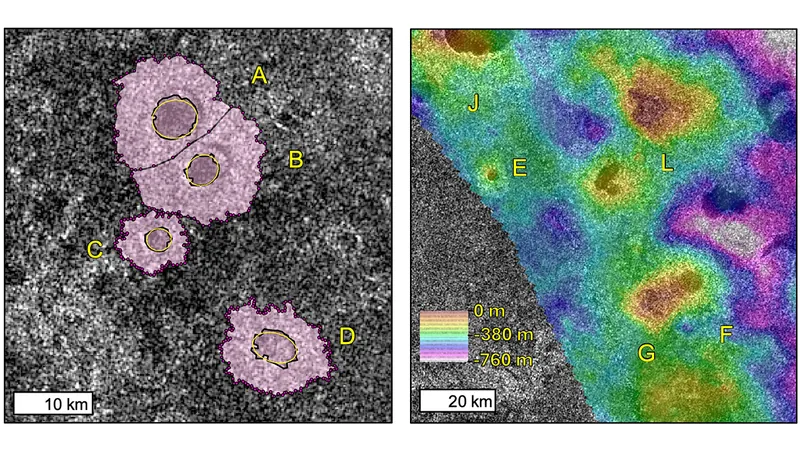
Uncovering the Fiery Secrets Behind Titan’s Rampart Craters!
2024-11-21
Author: Wei
Introduction
Saturn’s enigmatic moon, Titan, continues to astonish scientists with its unique geological features, particularly its rampart craters. These fascinating structures consist of a central depression surrounded by elevated deposits, known as “ramparts.” While their formation remains a mystery, recent studies suggest these craters may have an explosive volcanic origin.
Groundbreaking Research
A groundbreaking paper by Brouwer et al. (2024) in the Journal of Geophysical Research: Planets introduces an exciting hypothesis regarding the origins of Titan’s rampart craters. The researchers draw parallels to terrestrial gas emission craters (GECs) located in Earth's permafrost regions, proposing that similar explosive processes may occur on Titan, leading to the formation of these intriguing geological features.
Methane Dynamics
Furthermore, the study tackles the perplexing question of Titan's methane—a crucial component of its atmosphere. Current models indicate that without some form of replenishment, methane would deplete due to photochemical reactions within a dramatically short timespan, estimated to be between 10 million to 100 million years. Could the explosive formation of rampart craters serve as a mechanism to replenish this methane? The authors' findings suggest that if these explosive events are fueled by methane gas, they could potentially contribute to maintaining the moon’s atmospheric methane levels.
Morphologies of Rampart Craters
The research further explores the morphologies of the rampart craters, concluding that the gas explosion model accurately replicates what has been observed. However, there remains a need for more in-depth studies concerning the tensile strength of Titan-related materials to determine if a GEC-like formation can indeed explain the rampart craters or if alternative explosive volcanism phenomena are responsible.
Conclusion
As we delve deeper into Titan's mysteries, this study adds a thrilling layer of understanding to the moon's geological history and its atmospheric dynamics. Scientists continue to unravel the explosive forces at work beneath Titan’s icy surface, offering tantalizing possibilities for the moon’s future explorations.
Stay tuned, as this research provides not just answers, but also sparks curiosity for what else lies hidden within the intriguing layers of Titan!



 Brasil (PT)
Brasil (PT)
 Canada (EN)
Canada (EN)
 Chile (ES)
Chile (ES)
 España (ES)
España (ES)
 France (FR)
France (FR)
 Hong Kong (EN)
Hong Kong (EN)
 Italia (IT)
Italia (IT)
 日本 (JA)
日本 (JA)
 Magyarország (HU)
Magyarország (HU)
 Norge (NO)
Norge (NO)
 Polska (PL)
Polska (PL)
 Schweiz (DE)
Schweiz (DE)
 Singapore (EN)
Singapore (EN)
 Sverige (SV)
Sverige (SV)
 Suomi (FI)
Suomi (FI)
 Türkiye (TR)
Türkiye (TR)